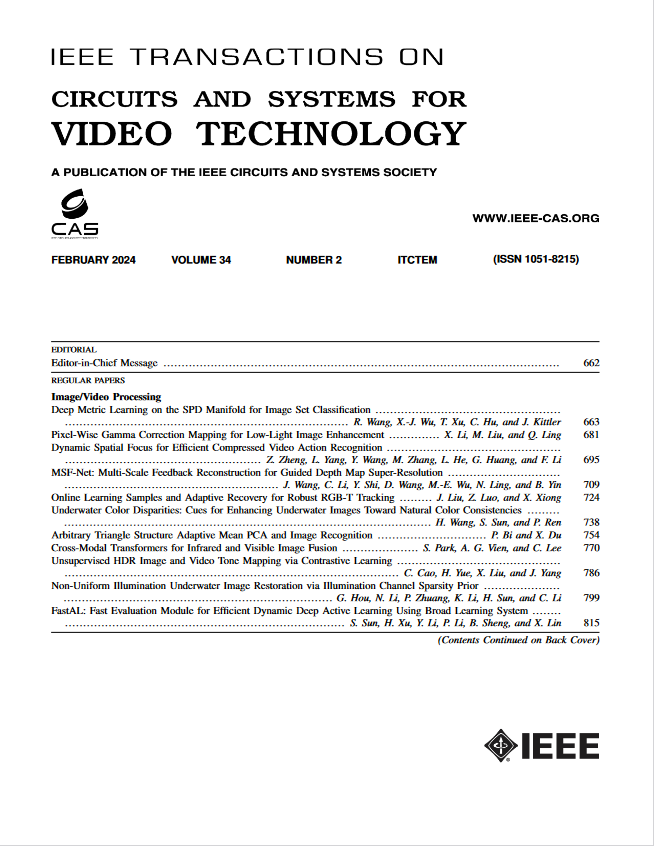DRC: Discrete Representation Classifier With Salient Features via Fixed-Prototype
IF 8.3
1区 工程技术
Q1 ENGINEERING, ELECTRICAL & ELECTRONIC
IEEE Transactions on Circuits and Systems for Video Technology
Pub Date : 2024-09-02
DOI:10.1109/TCSVT.2024.3453052
引用次数: 0
Abstract
Image classification models including convolutional neural networks (CNN) and vision transformers (ViT) commonly employ a fully connected (FC) layer as the classifier. However, the fully connected nature of FC brings large amounts of weight parameters, limits the efficiency of inference, tends to over-fit the training data, and struggles to learn distinct class weights. To solve these problems, we propose a discrete representation classifier (DRC), a generic parameter-free classifier that offers efficiency, robustness, and more discriminative categorization. Specifically, the DRC discards numerous unimportant features and focuses solely on the salient features which are reinforced during training and presented in short discrete form during inference. Unlike the way of learning pseudo-prototypes (weights) from data laden with complex patterns and noises in FC, the DRC introducing discriminative fixed-prototypes which are almost uniformly distributed across the high-dimensional feature space, thus helps the model to learn more distinct boundaries between categories. Further leveraging the advantage of DRC’s focus on salient features, we propose Salient-CAM, which is able to locate the most important region in image without the need for weighting feature maps. The experiments demonstrate that simply replacing the model’s classifier from FC to DRC can lead to a significant acceleration in the whole model’s inference and a more robust classification. Additionally, the proposed Salient-CAM exhibits excellent object localization ability in complex natural scenes.DRC:离散表示分类器: 通过固定原型获得显著特征
本文章由计算机程序翻译,如有差异,请以英文原文为准。
求助全文
约1分钟内获得全文
求助全文
来源期刊
CiteScore
13.80
自引率
27.40%
发文量
660
审稿时长
5 months
期刊介绍:
The IEEE Transactions on Circuits and Systems for Video Technology (TCSVT) is dedicated to covering all aspects of video technologies from a circuits and systems perspective. We encourage submissions of general, theoretical, and application-oriented papers related to image and video acquisition, representation, presentation, and display. Additionally, we welcome contributions in areas such as processing, filtering, and transforms; analysis and synthesis; learning and understanding; compression, transmission, communication, and networking; as well as storage, retrieval, indexing, and search. Furthermore, papers focusing on hardware and software design and implementation are highly valued. Join us in advancing the field of video technology through innovative research and insights.

 求助内容:
求助内容: 应助结果提醒方式:
应助结果提醒方式:


